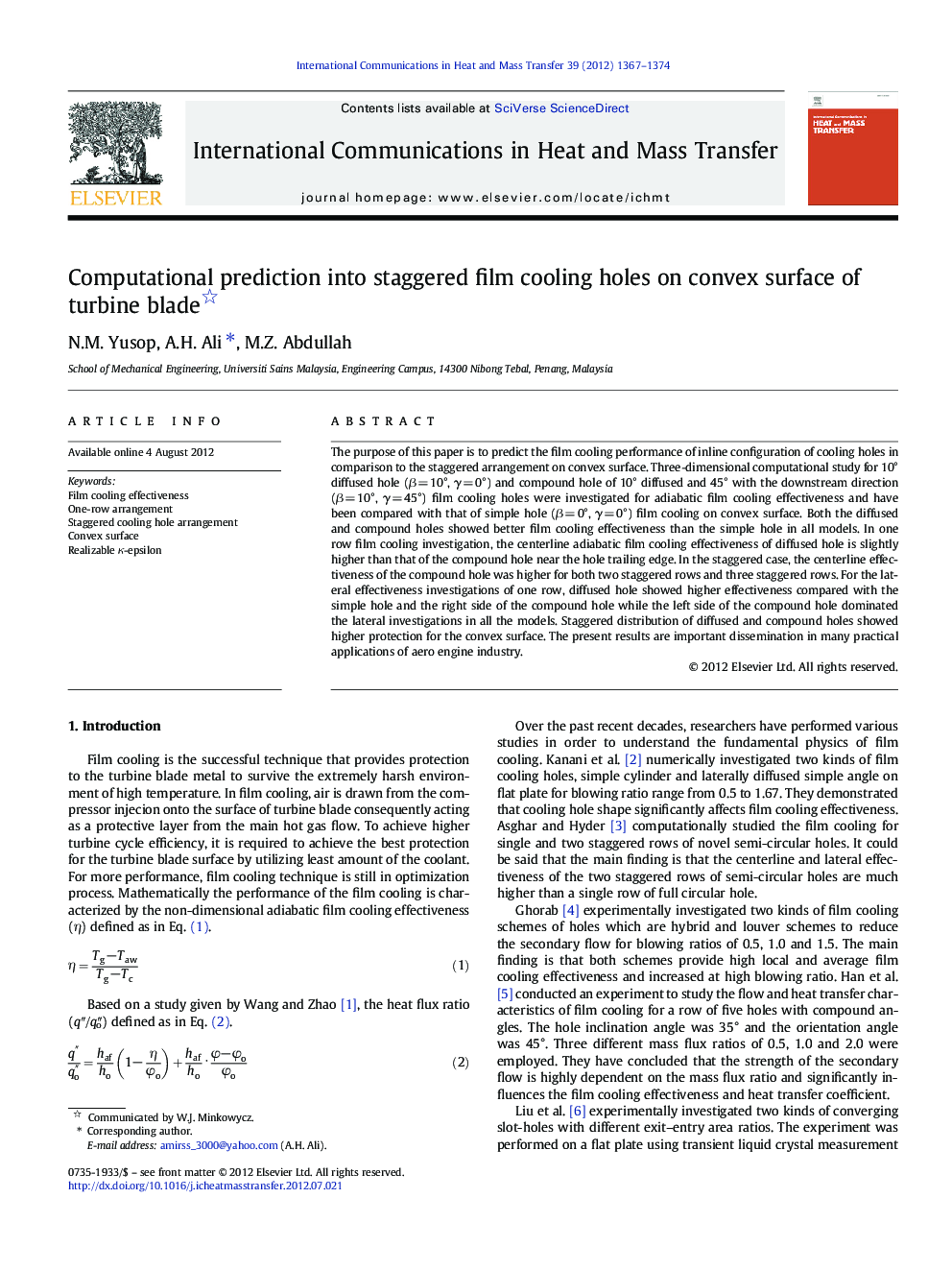| Article ID | Journal | Published Year | Pages | File Type |
|---|---|---|---|---|
| 653635 | International Communications in Heat and Mass Transfer | 2012 | 8 Pages |
The purpose of this paper is to predict the film cooling performance of inline configuration of cooling holes in comparison to the staggered arrangement on convex surface. Three‐dimensional computational study for 10° diffused hole (β = 10°, γ = 0°) and compound hole of 10° diffused and 45° with the downstream direction (β = 10°, γ = 45°) film cooling holes were investigated for adiabatic film cooling effectiveness and have been compared with that of simple hole (β = 0°, γ = 0°) film cooling on convex surface. Both the diffused and compound holes showed better film cooling effectiveness than the simple hole in all models. In one row film cooling investigation, the centerline adiabatic film cooling effectiveness of diffused hole is slightly higher than that of the compound hole near the hole trailing edge. In the staggered case, the centerline effectiveness of the compound hole was higher for both two staggered rows and three staggered rows. For the lateral effectiveness investigations of one row, diffused hole showed higher effectiveness compared with the simple hole and the right side of the compound hole while the left side of the compound hole dominated the lateral investigations in all the models. Staggered distribution of diffused and compound holes showed higher protection for the convex surface. The present results are important dissemination in many practical applications of aero engine industry.
